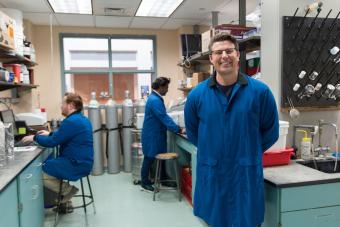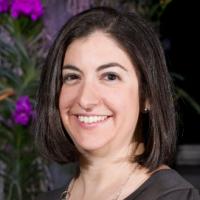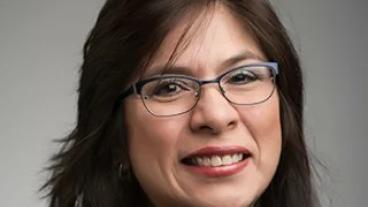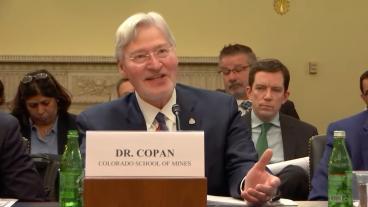Two Mines faculty members win NASA Early Career Faculty Award

Faculty members at Colorado School of Mines were two of the eight recipients of the 2025 NASA Early Career Faculty Award.
The prestigious grants support research by outstanding faculty early in their careers. The award challenges faculty researchers to examine the theoretical feasibility of ideas and approaches critical to making science, space travel and exploration more effective, affordable and sustainable.
Omid Beik, assistant professor of electrical engineering, and C. Michael McGuirk, associate professor of chemistry, will both conduct research that could lead to breakthroughs that power the future of space exploration in novel ways.
“We usually do a lot of really fundamental exploratory science,” McGuirk said. “This is still fundamental science, but we are trying to do it to intuitively enable new technology.”

Exploring our galaxy, and beyond
How far we can travel through outer space depends on the amount of power and the propulsion systems. Beik and his team are working on expanding our capabilities in a big way.
“All the spacecraft we have sent to space operate below 200 volts, maximum around 300 volts,” Beik said. “This project is looking at generating around 10,000 volts, while managing breakdown voltages. That is a massive leap in voltage.”
“In space, the breakdown of voltage is very different than on Earth,” Beik said. “So, for our project I had to think, ok, what semiconductor switching, electric machines, and power systems do we have to use? These led me to proposing a very high-voltage megawatt-scale electric power and propulsion systems for spacecraft, which also could be used for powering human habitation on the Moon and Mars.” The megawatt scale propulsion system Beik and his team are working on would enable NASA to go farther, for longer, than it has before. Human travel to Mars or long-term travel in space aboard larger spacecraft could be possible, Beik said, with the systems he and his team are developing.
Currently, the largest spacecraft ever launched is the International Space Station, which has a maximum capacity of around 120 kilowatts and an average production of 70 kilowatts. Beik’s work would increase a spacecraft’s capacity significantly – 10 times more, he said. And, he added, the ISS is just 400 kilometers above Earth, so increasing the power capacity into the thousands expands travel possibilities even further from our home planet.

Powering the dark side of the Moon
Once we power spacecraft that can go farther, we may also need to power ground-based missions elsewhere in the cosmos. But for those missions to be successful, they’ll need a reliable power source.
That’s extra challenging in places like the Moon and Mars, which have permanently shadowed regions, making solar panels futile as a power source for what NASA calls “mobile assets.” These assets can deploy from an established base and explore the terrain but need some way to stay powered when the Sun’s rays aren’t available. McGuirk and his team are working on a possible solution.
Their idea centers on using fuel cells that convert chemical fuel into energy without combustion. The fuel cells work like a battery, powered by pressurized gases. McGuirk is working on creating metal–organic frameworks that function like sponges with pores the size of one nanometer. These frameworks can absorb molecules – the team is working with methane and oxygen – but are also flexible. When not in use, the frameworks could fold onto themselves, but easily open up when filled with gas.
McGuirk said that flexibility makes the frameworks a more efficient power storage medium for mobile assets like rovers.
“These kinds of frameworks allow you to move a lot of gas, which acts as fuel, in and out of the ‘sponge’ with just small swings in pressure and temperature,” he said. “You wouldn’t need a lot of energy to store and deliver the fuel source.”
A big part of the work lies in understanding how the frameworks change when gas pressure changes, in order to better deliver the gases serving as fuel for the mobile assets.
“By understanding all the variables, we can then tune the frameworks in order to have them be as optimal as possible,” McGuirk said. “We’d be able to very precisely add or deliver methane and oxygen to the fuel cell as desired.”
The mobile assets could be the size of a small car, so a fuel source would need to support deploying the asset from a base, completing a mission and then returning to the base for recharging.
The project could also have applications closer to home, McGuirk said.
“Fuel cells aren’t just technology for space, but for Earth as well,” McGuirk said. “We’re hoping that some of the insights that we can gain here would also be directly translatable to technologies on Earth and perpetuate fuel cells as a viable technology for the future.”
The right place to create tech for space
For both Beik and McGuirk’s projects, all the work will be done at Mines, with a team of Mines researchers.
Theresa Nosel, who is pursuing a PhD in materials science and a master’s degree in chemistry, works in McGuirk’s lab and had completed several internships at NASA as an undergraduate before coming to Mines. Her knowledge of the kinds of missions NASA undertakes and the resources available there have been invaluable to the project.
“Theresa was incredibly helpful in understanding NASA’s desires and being able to interpret those so we can really figure out how to approach this challenge,” McGuirk said. “Actually having a student who had worked with NASA so much and had some familiarity with how it functions was a big part of us having the confidence to go after it.”
Location also plays an important role when it comes to Mines being the right place to work toward the future of space travel, Beik said.
“We are in the right location, being in Colorado and close to Denver,” he said. “There’s a lot of space industry here. I’ve reached out to companies, some larger, some startups, and we’ve had the chance to do some collaboration.”




